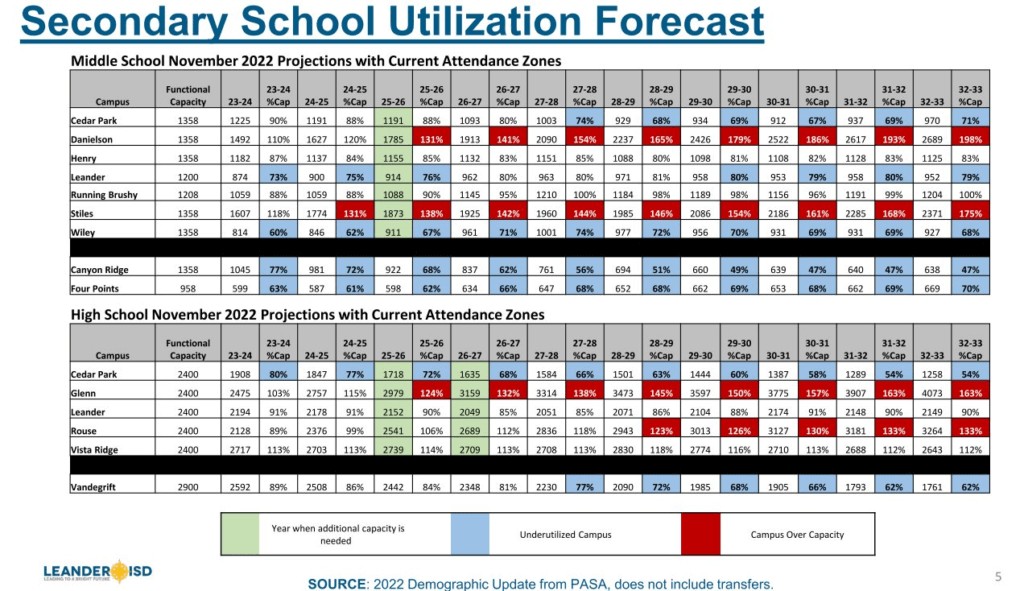
By CLAYTON KELLEY, Hill Country News
To provide relief on the school district’s enrollment numbers, Leander ISD Board of Trustees approved Dec. 8 a new process for utilizing existing facilities and came up with criteria to counteract the growing population imbalance in secondary school attendance zoning. The district projects its student population to grow even faster over the next decade with even moderate estimates projecting the district’s student population will reach an estimated 51,083 students by 2032.
“Typically, when you see zoning, you’re opening a new school somewhere, but when you have overcrowding taking place, like we do now, you can use zoning to help defer the timing of future school construction,” Chief Facilities Officer, Jimmy Disler said.
Cedar Park High School is the school that is considerd to be the most underutilized with it projected to be operating at only 80% capacity by the 2023-24 school year, according to staff presentations at the meeting, while a school like Glenn High School is projected to be operating overcapacity at 124% by the 2025-26 school year.
Similar projections for the district’s middle schools show schools like Leander Middle School will be underutilized by operating at 73% capacity by the 2023-24 school year while Stiles Middle School and Danielson Middle School will be overcapacity with projections estimating they will be 131% overcapacity by the 2024-25 and 2025-26 school years, respectively.
“In three or four years, Danielson and Stiles will be right at 1,800 kids each, that’s extremely overcrowded,” Disler said. “We’ve got to be able to provide some relief.”
The district’s timeline targets creating, publishing, and collecting community input from January to March, hosting community forums from March to April and implementing board action for the full final plan by June 8.
“We’re trying to get a full plan at least (a year) ahead of time so that students and parents know there’s gonna be changes in attendance zones for some students,”Disler said. “We wanna make sure everyone will be aware when we’re going to have public forums and we want to be very transparent about the process.”
The district plans to implement its 10-year long-range plan during the process, which would include rezoning the district’s secondary schools so they can delay for one year the construction of high school No. 7 until 2029 and middle school No. 10 until 2030. The district estimates high school No. 7 will cost $426 million to build and if middle school No. 10 opens up in 2030, the estimate cost will be $165 million.
The district’s main focus is to utilize current existing buildings especially in the northern part of the district where the fastest growth is occurring. The process could be subject to change based on how the data develops.
“Several times over the years we’ve had a plan to start construction at location A and new data will start coming in and we realize it needs to be at location B,” Disler said. “We have to constantly be monitoring enrollment projects.”
Disler cites two external factors that could potentially change the data on attendance zoning such as whether an economic recession occurs or whether the housing market steady increases leads to a trend of a few children per household.
“The price of homes has definitely gone up and we used to be heavy on the starter homes in the district,” Disler said. “Now we’re not in that situation and we don’t have as many young kids from the household come in as we used to.”
The district wants to emphasize that each parent pays attention to future board meetings and LISD Board President Trish Bode said it will be an ongoing agenda item.

